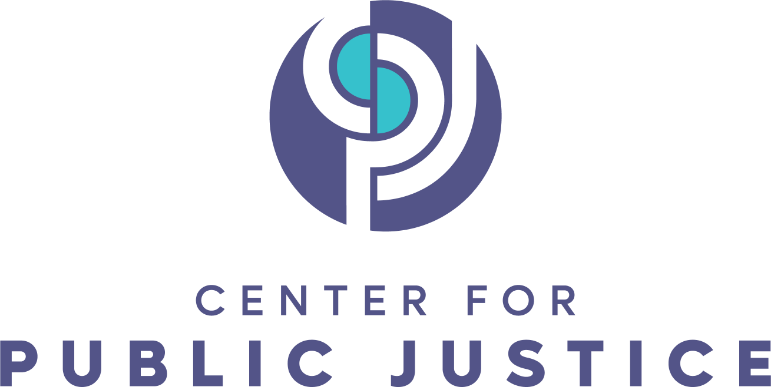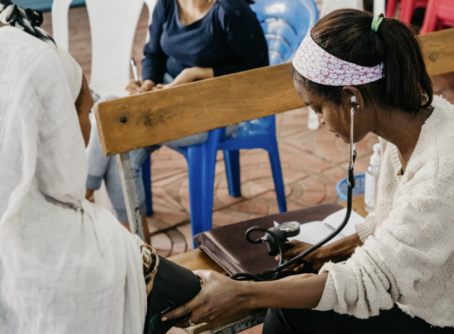
This interview is a part of Shared Justice’s Series, Voices of Youth Diversion. This series looks at ways that community organizations, in partnership with state and local governments, are working together to rehabilitate youth and reduce the harmful impacts of youth interaction with the justice system.
EF: We’d love it if you could just share a little bit of your personal journey and how you came to work in youth justice.
WILLIAMS: In full transparency, I’m the youngest of six. I come from a middle class family where my mom was a nurse and my father was a mechanic. I come from a community where not a lot of people really made it out of my community, even though I lived in a somewhat middle-class community at the time. Throughout the years, as I got older it turned into, in the 90s, I’m gonna show my age, but in the early 90s the drugs came through our community.
Being someone who’s young, where I come from, a middle class family, I was one of the few kids who were Black in the community and had a car. So at the age 16, I got pulled over a lot. My mom had to have discussions with us about what will happen if you get pulled over by a police officer. And nine times out of 10, that officer would be a person that doesn’t look like me.
I decided to go away to school and go to college. I started off at the community college level and then I transferred to a four year institution, to Central State University which is a historically black college and university. There I found my niche, and I realized I wanted to study criminal justice, political science, pre-law. Then once I graduated with my degree, I decided I wanted to further my education, so I got my masters degree in Criminal Justice from Youngstown State University, and then from there I got my masters, another masters degree in Social Work from the University of Pittsburgh.
So once I did that and I came back home and started working in the community, I seen some of the injustices not just to the people of color, but just people in general — as injustice as a whole lot of people were being arrested for low level and also nonviolent offenses and had to go through that process.
EF: Can you talk a little bit about how you developed Foundation of HOPE’s diversion programs and what makes it different from other diversion programs?
WILLIAMS: I initially started this program with another organization. That was in 2016. Whenever I partnered with this organization to start this initiative, it was a vision of mine, but it was also a vision of another woman who was the executive director of that particular organization. Her expertise was educating the community and advocating for people to have equal and fair housing within the community. They’re building a lot of places to live here in the city of Pittsburgh and all across the country. But when they build these homes, they aren’t making them available, accessible and affordable to people who need their homes the most. So this one particular woman was very, very strong in advocating on behalf of those people who were being marginalized and not having any opportunities for fair and equitable housing.
I, on the other hand, was coming from a perspective of “I want to reach out to these kids and young people and adults who are being affected by the system.” Some have been traumatized by being evicted from their homes because they may have lived in a house or an apartment in which they received some type of federal subsidy. If they commit an offense or someone in their household commits an offense, that now will subject them to be evicted, because they can’t violate the conditions of their lease. When we did that, we decided back in 2015, to look at some research. Then we traveled out to Seattle to look at their Law Enforcement Assisted Diversion program called LEAD; it’s a national model. We took some of their concepts based on what we wanted to do back in Pittsburgh and we want to focus on one particular section of the City of Pittsburgh called the North Side. So we started that and we went to the police and asked them if they would be willing to change the way they have done policing in the past.
Police are autocratic and organizational procedures come from top down and many officers had the mindset back then that if you do a crime then you do the time regardless or whatever it is. The police did not want the people in the community, who they are charged to protect and as well as keep the community safe, or taxpaying citizens to think that we’re letting criminals off the hook for committing crime. We had to meet with the police to educate them on what the Diversion Program entailed. We informed them that the program will not “widen the net” but target youth that committed low-medium level, non-violent offenses and could be served within the community. The youth that committed the more serious offenses would still go through the traditional juvenile justice process. We’re talking about those low-level offenses, people who get caught for shoplifting, people who get caught with a small amount of drugs. People who get caught for loitering and trespassing. A lot of people were getting in trouble for that.
But in particular when we wanted to do a pilot. We wanted to focus on those individuals who were being evicted from their homes and they lived in public housing. We asked the police if we could take do a pilot project and see how many people that the police come across with these low-level to medium-level nonviolent offenses and see if you refer them to our program as opposed to writing them a citation or summons and taking them to the juvenile detention center or to an adult jail. We’ll work with them and deal with their concerns and their issues within the community. We’ll see what impact we’ve had for the community as opposed to them going to jail and not getting their needs met and come back out and do the same thing over and over again. So we’ve had a pilot project start off with maybe 38 people. Of those 38 people, 33 of those people were successful after a year and did not get in any more trouble. During the pilot project we were able to find out that they had other issues that were going on within their household. We were able to find out why a youth did particular things by having a Case Manager assigned to the family that conducted home and school visits. The Case Manger would find out that a kid is not going to school because they’re hungry and they’re hungry because Mom lost her job and didn’t know the process of signing up to get federal aid. All these things, these are just things that we found out as we went along.
So we piloted that, then once we came back with the numbers and the data, we then decided to write a grant and make the Diversion Initiative a program within the organization. We wrote a grant to solicit foundations to be able to give us some financial resources to be able to do this. If we were going to do it the right way, we had to get staff to be able to go into these communities to address the concerns being presented. We had to first and foremost partner with the police to have a buy-in to make it work. The police are the first point of contact. They’re the ones who are identifying the youth. They’re the ones who are getting complaints from the people in the community saying a young person has broken into my garage and stolen something or vandalized my property. Or, getting your phone calls from managers at grocery and/or convenient stores saying these kids have shoplifted. They haven’t stolen anything major, but they stole some bread and some milk. We want to peel back that onion as to why. When you find out that the “why” is because they’re hungry, they don’t have the resources to be able to get what they need and things. Sometimes we’re looking through our lenses of people who are fortunate enough to be able pay for certain things. Who knows what we would do if we were hungry, if we had children that were crying due to hunger and couldn’t feed them. What would you do? As a mother, you would go and do whatever is necessary to be able to feed your child. These are the things that we were finding out.
That’s how we were able to start the program just by partnering with the police. We started with the police and then we realized that it’s not just the police — we need to partner with the Housing Authority because the housing authority was where the majority of our target population lived in subsidized housing. So, we asked the Housing Authority, as opposed to starting the eviction process with the lease holder because someone in their household violated a condition of their lease, “Would you be willing to be a partner with us to provide an alternative to these individuals so they can remain in their homes even though a misdemeanor crime was committed?” We said, would you let them know that there’s a program that is available for them if their kid or whoever commits an offense? We don’t want you to be evicted, but in order for you to stop the eviction process, you have to participate In this diversion program? Our diversion program was voluntary. This is a way for you to be able to avoid charges to get your needs met. Then, at the same time, you can avoid eviction. So that’s how we partner with the Housing Authority and so our relationship with them has been very good.
Then the third partner who I reached out to was juvenile probation because they have some kids that they could divert at the intake level. Initially, our focus was on pre-arrest diversion; therefore, we did not want to target youth that have already been involved with juvenile probation and have been adjudicated. Those particular youth are the youth that the people in the community say, why do they qualify for a diversion program if they already been through the juvenile justice process, except everyone deserves a second chance. But when I first started the initiative, I wanted to focus on those kids who were at the intake level that the probation officers from the intake level could divert. [I also wanted to focus on] those who are in the intake level who may have already been involved and engaged, but they have perhaps a consent decree and therefore as part of their consent decree they could put that they have to participate in the diversion program. So whenever they go back before the judge, after six months, if they comply with everything within that consent decree, then those charges could be dismissed.
Those were the three major partners that I started this initiative with, along with that other organization in 2016. At the start of 2017, in the best interest of the Diversion Program, I met with the Foundation of HOPE Executive Director at the time, Mr. Jody Raeford to see if they would be open to taking on the Diversion Program. I presented my pitch to him in regards to what The Diversion program was all about, and asked if he would be willing to accept this program. The Foundation of HOPE had 3 other programs that only served adults. Two of the three programs were located within the county jail for those people who are currently in jail. The third program is in the community for those individuals who work, who were at one point in time incarcerated and they’re returning to the community; they need some aftercare services to help them reintegrate into the community. At the time he took it to his board of directors and they agreed to bring on the Youth Diversion program as they saw something being involved from the ground level. In July 2017, the Youth Diversion program started here at the Foundation of HOPE.
I needed to expand my partners as opposed to just the police, probation and Housing Authority. Then I said, you know what? I’ll open it up to schools. There’s a lot of kids who are committing offenses in schools because they have their zero tolerance policies. They’re the number one contributor to the school to prison pipeline because of their zero-tolerance policies and the way things are written up in regards to the juvenile law. For example, if you and I were engaged in a physical altercation and I pushed you into a locker and you were not injured. That would be now considered aggravated assault and be referred to juvenile court. So that’s why I wanted to go to the schools. I said, “I respect your zero tolerance policies but asked if they would be open to looking at things on a case by case basis.” Also, If you identify some students who are being disruptive in the classroom, you can refer those students as well so the teachers can focus on educating the students rather than being a disciplinarian.
WILLIAMS: The last people who I decided to accept referrals from was the community. There are kids who are going to after school programs, and the after school programs sometimes provide food for their families. There’s many times I get referrals from providers, who say “You know, we have a family here and the grandmother has told me that her grandson or granddaughter is involved in some risky behaviors. And they haven’t been caught yet. I mean, it’s just a matter of time.” So they would like to be proactive as opposed to being interventive after the situation happens.
“We don’t want a kid or a young person that made a mistake to have that as an indictment that could follow for the rest of their life.
So therefore, I changed the scope of my diversion program from the beginning to meet the needs of the community. When this really started, it was supposed to be a pre-arrest program to divert young kids who commit low level to medium level nonviolent offenses so they don’t have to go forward through the juvenile justice system. Now there’s different types of diversion programs, There’s pre-arrest diversion programs, there’s post-arrest diversion programs and there’s diversion programs where you can be diverted through different decision points within the juvenile justice system.
Therefore I said at the end of the day, even though it was supposed to be pre arrest, the police are identifying these kids in the community, they said, you know what? We don’t want a kid or a young person that made a mistake to have that as an indictment that could follow for the rest of their life.
We want to give them a second chance, in other words, a second chance at doing the right thing. That’s why our program is not just specific for those pre-arrest diversions, it started that way, but I had to transition throughout.
EF: We were looking at Foundation of HOPE and we noticed it’s an interfaith organization with many religious services. Could you speak a little bit about how this interfaith aspect is played out in your diversion programs and how it impacts the youth you work with?
WILLIAMS: The reason how it was started is because the Allegheny County Jail, which is our county jail, requires that all inmates are entitled to have access to religious services within the jail. So that’s how the Foundation of HOPE was established for us to be able to go to the jail, to be able to provide chaplaincy services to those individuals of all different religious faiths and backgrounds. One thing that we want to make sure of is that we have relationships with different churches and different faiths to make sure that this is something that we can expose the kids to, but it’s not part of our curriculum. It’s not part of anything that we do in regards to the workshops that we do, because we don’t want the kids to feel as though that this is a Jeff Williams or Foundation HOPE thing. That is something that for now, whenever someone is incarcerated, that faith piece is based off of the mission that the organization first started.
EF: Is there anything else you’d like to share with us that we haven’t asked or that we should have asked you?
WILLIAMS: When I started this program, I wanted to address 3 different things. I wanted to change systems. I wanted to change how the police officers policed our communities. I wanted to change how school districts look at kids in regards to these zero tolerance policies. So therefore we’re not overcharging these kids. I wanted to change systems. I wanted to change how police look at kids. You look at a kid who’s standing on the curb, and if you see a group of black kids with hoodies on, you think they’re hoodlums. But if you see a group of white kids on the curb with hoodies on, you think they’re skateboarders. So I wanted to change the perception of how we look at kids. I wanted the community to change because I want to bridge the gap between the police and community relations, because a lot of stuff happened prior to the murder of George Floyd by Police Officers that brought national attention. But there’s other things that have happened in the past where people don’t trust the police, so I want to bridge that gap. The reason why I want to bridge that gap is because I want the people in the community to know that police are there to protect and serve and not there to just arrest and incarcerate.
EF: Thanks so much for making the time for today. This has been a great conversation and I’m really excited to share what you do with our readers. Thank you.
Jeff Williams is the Acting Executive Director of Foundation of HOPE, an interfaith nonprofit serving incarcerated individuals and returning citizens by offering a continuum of care to support opportunities for new life.
WANT TO GET INVOLVED?
1. Sign up to receive Shared Justice’s monthly newsletter and stay up to date on the latest content, resources, and highlights.
2. Write for us! To learn more about writing for Shared Justice, email emily.fromke@cpjustice.org.
3. Form a Political Discipleship group to practice meaningful political engagement in your community. The Center for Public Justice’s Political Discipleship is a guide for active Christian citizenship, designed to empower people with skills and tools to shape policy and address inequality and injustice in their communities. To learn more about starting a group, visit our website or contact emily.fromke@cpjustice.org





